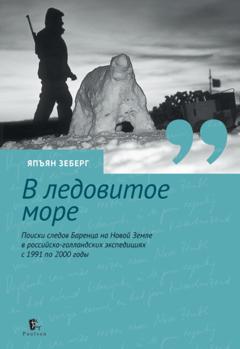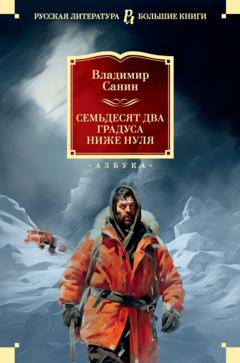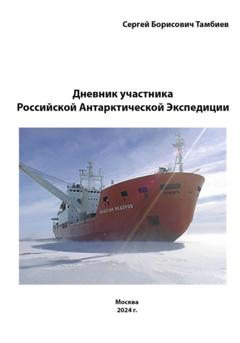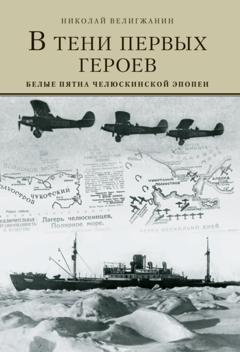At the Mountains of Madness / Хребты безумия. Книга для чтения на английском языке
Howard Phillips Lovecraft
Чтение в оригинале (Каро)Modern Prose
Роман Говарда Филлипса Лавкрафта «Хребты безумия» (1931) – одно из центральных произведений цикла «мифы Ктулху», в котором поразительным образом сочетается научная фантастика, мистика и хоррор.
В книге повествуется о драматичных событиях, произошедших во время экспедиции в Антарктику. Вместе с группой исследователей читатель столкнется с фантасмагорическим миром древнего ужаса, лишь на шаг отстоящим от нашей реальности.
В книге приводится полный неадаптированный текст романа.
В формате PDF A4 сохранен издательский макет.
Howard Phillips Lovecraft
At the Mountains of Madness
В© РљРђР Рћ, 2018
Все права защищены
I
I am forced into speech because men of science have refused to follow my advice without knowing why. It is altogether against my will that I tell my reasons for opposing this contemplated invasion of the antarctic – with its vast fossil hunt and its wholesale boring and melting of the ancient ice caps. And I am the more reluctant because my warning may be in vain.
Doubt of the real facts, as I must reveal them, is inevitable; yet, if I suppressed what will seem extravagant and incredible, there would be nothing left. The hitherto withheld photographs, both ordinary and aerial, will count in my favor, for they are damnably vivid and graphic. Still, they will be doubted because of the great lengths to which clever fakery can be carried. The ink drawings, of course, will be jeered at as obvious impostures, notwithstanding a strangeness of technique which art experts ought to remark and puzzle over.
In the end I must rely on the judgment and standing of the few scientific leaders who have, on the one hand, sufficient independence of thought to weigh my data on its own hideously convincing merits or in the light of certain primordial and highly baffling myth-cycles; and on the other hand, sufficient influence to deter the exploring world in general from any rash and over-ambitious program in the region of those mountains of madness. It is an unfortunate fact that relatively obscure men like myself and my associates, connected only with a small university, have little chance of making an impression where matters of a wildly bizarre or highly controversial nature are concerned.
It is further against us that we are not, in the strictest sense, specialists in the fields which came primarily to be concerned. As a geologist, my object in leading the Miskatonic University Expedition was wholly that of securing deep-level specimens of rock and soil from various parts of the antarctic continent, aided by the remarkable drill devised by Professor Frank H. Pabodie of our engineering department. I had no wish to be a pioneer in any other field than this, but I did hope that the use of this new mechanical appliance at different points along previously explored paths would bring to light materials of a sort hitherto unreached by the ordinary methods of collection.
Pabodie’s drilling apparatus, as the public already knows from our reports, was unique and radical in its lightness, portability, and capacity to combine the ordinary artesian drill principle with the principle of the small circular rock drill in such a way as to cope quickly with strata of varying hardness. Steel head, jointed rods, gasoline motor, collapsible wooden derrick, dynamiting paraphernalia, cording, rubbish-removal auger, and sectional piping for bores five inches wide and up to one thousand feet deep all formed, with needed accessories, no greater load than three seven-dog sledges could carry. This was made possible by the clever aluminum alloy of which most of the metal objects were fashioned. Four large Dornier aeroplanes, designed especially for the tremendous altitude flying necessary on the antarctic plateau and with added fuel-warming and quick-starting devices worked out by Pabodie, could transport our entire expedition from a base at the edge of the great ice barrier to various suitable inland points, and from these points a sufficient quota of dogs would serve us.
We planned to cover as great an area as one antarctic season – or longer, if absolutely necessary – would permit, operating mostly in the mountain ranges and on the plateau south of Ross Sea; regions explored in varying degree by Shackleton, Amundsen, Scott, and Byrd. With frequent changes of camp, made by aeroplane and involving distances great enough to be of geological significance, we expected to unearth a quite unprecedented amount of material – especially in the pre-Cambrian strata of which so narrow a range of antarctic specimens had previously been secured. We wished also to obtain as great as possible a variety of the upper fossiliferous rocks, since the primal life history of this bleak realm of ice and death is of the highest importance to our knowledge of the earth’s past. That the antarctic continent was once temperate and even tropical, with a teeming vegetable and animal life of which the lichens, marine fauna, arachnida, and penguins of the northern edge are the only survivals, is a matter of common information; and we hoped to expand that information in variety, accuracy, and detail. When a simple boring revealed fossiliferous signs, we would enlarge the aperture by blasting, in order to get specimens of suitable size and condition.
Our borings, of varying depth according to the promise held out by the upper soil or rock, were to be confined to exposed, or nearly exposed, land surfaces – these inevitably being slopes and ridges because of the mile or two-mile thickness of solid ice overlying the lower levels. We could not afford to waste drilling the depth of any considerable amount of mere glaciation, though Pabodie had worked out a plan for sinking copper electrodes in thick clusters of borings and melting off limited areas of ice with current from a gasoline-driven dynamo. It is this plan – which we could not put into effect except experimentally on an expedition such as ours – that the coming Starkweather-Moore Expedition proposes to follow, despite the warnings I have issued since our return from the antarctic.
The public knows of the Miskatonic Expedition through our frequent wireless reports to the Arkham Advertiser and Associated Press, and through the later articles of Pabodie and myself. We consisted of four men from the University – Pabodie, Lake of the biology department, Atwood of the physics department – also a meteorologist – and myself, representing geology and having nominal command – besides sixteen assistants: seven graduate students from Miskatonic and nine skilled mechanics. Of these sixteen, twelve were qualified aeroplane pilots, all but two of whom were competent wireless operators. Eight of them understood navigation with compass and sextant, as did Pabodie, Atwood, and I. In addition, of course, our two ships – wooden ex-whalers, reinforced for ice conditions and having auxiliary steam – were fully manned.
The Nathaniel Derby Pickman Foundation, aided by a few special contributions, financed the expedition; hence our preparations were extremely thorough, despite the absence of great publicity. The dogs, sledges, machines, camp materials, and unassembled parts of our five planes were delivered in Boston, and there our ships were loaded. We were marvelously well-equipped for our specific purposes, and in all matters pertaining to supplies, regimen, transportation, and camp construction we profited by the excellent example of our many recent and exceptionally brilliant predecessors. It was the unusual number and fame of these predecessors which made our own expedition – ample though it was – so little noticed by the world at large.
As the newspapers told, we sailed from Boston Harbor on September 2nd, 1930, taking a leisurely course down the coast and through the Panama Canal, and stopping at Samoa and Hobart, Tasmania, at which latter place we took on final supplies. None of our exploring party had ever been in the polar regions before, hence we all relied greatly on our ship captains – J. B. Douglas, commanding the brig Arkham, and serving as commander of the sea party, and Georg Thorfinnssen, commanding the barque Miskatonic – both veteran whalers in antarctic waters.
As we left the inhabited world behind, the sun sank lower and lower in the north, and stayed longer and longer above the horizon each day. At about 62° South Latitude we sighted our first icebergs – table-like objects with vertical sides – and just before reaching the antarctic circle, which we crossed on October 20th with appropriately quaint ceremonies, we were considerably troubled with field ice. The falling temperature bothered me considerably after our long voyage through the tropics, but I tried to brace up for the worse rigors to come. On many occasions the curious atmospheric effects enchanted me vastly; these including a strikingly vivid mirage – the first I had ever seen – in which distant bergs became the battlements of unimaginable cosmic castles.
Pushing through the ice, which was fortunately neither extensive nor thickly packed, we regained open water at South Latitude 67°, East Longitude 175° On the morning of October 26th a strong land blink appeared on the south, and before noon we all felt a thrill of excitement at beholding a vast, lofty, and snow-clad mountain chain which opened out and covered the whole vista ahead. At last we had encountered an outpost of the great unknown continent and its cryptic world of frozen death. These peaks were obviously the Admiralty Range discovered by Ross, and it would now be our task to round Cape Adare and sail down the east coast of Victoria Land to our contemplated base on the shore of McMurdo Sound, at the foot of the volcano Erebus in South Latitude 77° 9’.
The last lap of the voyage was vivid and fancy-stirring. Great barren peaks of mystery loomed up constantly against the west as the low northern sun of noon or the still lower horizon-grazing southern sun of midnight poured its hazy reddish rays over the white snow, bluish ice and water lanes, and black bits of exposed granite slope. Through the desolate summits swept raging, intermittent gusts of the terrible antarctic wind; whose cadences sometimes held vague suggestions of a wild and half-sentient musical piping, with notes extending over a wide range, and which for some subconscious mnemonic reason seemed to me disquieting and even dimly terrible. Something about the scene reminded me of the strange and disturbing Asian paintings of Nicholas Roerich, and of the still stranger and more disturbing descriptions of the evilly fabled plateau of Leng which occur in the dreaded Necronomicon of the mad Arab Abdul Alhazred. I was rather sorry, later on, that I had ever looked into that monstrous book at the college library.
On the 7th of November, sight of the westward range having been temporarily lost, we passed Franklin Island; and the next day descried the cones of Mts. Erebus and Terror on Ross Island ahead, with the long line of the Parry Mountains beyond. There now stretched off to the east the low, white line of the great ice barrier, rising perpendicularly to a height of two hundred feet like the rocky cliffs of Quebec, and marking the end of southward navigation. In the afternoon we entered McMurdo Sound and stood off the coast in the lee of smoking Mt. Erebus. The scoriac peak towered up some twelve thousand, seven hundred feet against the eastern sky, like a Japanese print of the sacred Fujiyama, while beyond it rose the white, ghostlike height of Mt. Terror, ten thousand, nine hundred feet in altitude, and now extinct as a volcano.
Puffs of smoke from Erebus came intermittently, and one of the graduate assistants – a brilliant young fellow named Danforth – pointed out what looked like lava on the snowy slope, remarking that this mountain, discovered in 1840, had undoubtedly been the source of Poe’s image when he wrote seven years later:
“– the lavas that restlessly roll
Their sulphurous currents down Yaanek
In the ultimate climes of the pole —
That groan as they roll down Mount Yaanek
In the realms of the boreal pole.”
Danforth was a great reader of bizarre material, and had talked a good deal of Poe. I was interested myself because of the antarctic scene of Poe’s only long story – the disturbing and enigmatical Arthur Gordon Pym. On the barren shore, and on the lofty ice barrier in the background, myriads of grotesque penguins squawked and flapped their fins, while many fat seals were visible on the water, swimming or sprawling across large cakes of slowly drifting ice.
Using small boats, we effected a difficult landing on Ross Island shortly after midnight on the morning of the 9th, carrying a line of cable from each of the ships and preparing to unload supplies by means of a breeches-buoy arrangement. Our sensations on first treading Antarctic soil were poignant and complex, even though at this particular point the Scott and Shackleton expeditions had preceded us. Our camp on the frozen shore below the volcano’s slope was only a provisional one, headquarters being kept aboard the Arkham. We landed all our drilling apparatus, dogs, sledges, tents, provisions, gasoline tanks, experimental ice-melting outfit, cameras, both ordinary and aerial, aeroplane parts, and other accessories, including three small portable wireless outfits – besides those in the planes – capable of communicating with the Arkham’s large outfit from any part of the antarctic continent that we would be likely to visit. The ship’s outfit, communicating with the outside world, was to convey press reports to the Arkham Advertiser’s powerful wireless station on Kingsport Head, Massachusetts. We hoped to complete our work during a single antarctic summer; but if this proved impossible, we would winter on the Arkham, sending the Miskatonic north before the freezing of the ice for another summer’s supplies.
I need not repeat what the newspapers have already published about our early work: of our ascent of Mt. Erebus; our successful mineral borings at several points on Ross Island and the singular speed with which Pabodie’s apparatus accomplished them, even through solid rock layers; our provisional test of the small ice-melting equipment; our perilous ascent of the great barrier with sledges and supplies; and our final assembling of five huge aeroplanes at the camp atop the barrier. The health of our land party – twenty men and fifty-five Alaskan sledge dogs – was remarkable, though of course we had so far encountered no really destructive temperatures or windstorms. For the most part, the thermometer varied between zero and 20° or 25° above, and our experience with New England winters had accustomed us to rigors of this sort. The barrier camp was semi-permanent, and destined to be a storage cache for gasoline, provisions, dynamite, and other supplies. Only four of our planes were needed to carry the actual exploring material, the fifth being left with a pilot and two men from the ships at the storage cache to form a means of reaching us from the Arkham in case all our exploring planes were lost. Later, when not using all the other planes for moving apparatus, we would employ one or two in a shuttle transportation service between this cache and another permanent base on the great plateau from six hundred to seven hundred miles southward, beyond Beardmore Glacier. Despite the almost unanimous accounts of appalling winds and tempests that pour down from the plateau, we determined to dispense with intermediate bases, taking our chances in the interest of economy and probable efficiency.
Wireless reports have spoken of the breathtaking, four-hour, nonstop flight of our squadron on November 21st over the lofty shelf ice, with vast peaks rising on the west, and the unfathomed silences echoing to the sound of our engines. Wind troubled us only moderately, and our radio compasses helped us through the one opaque fog we encountered. When the vast rise loomed ahead, between Latitudes 83В° and 84В°, we knew we had reached Beardmore Glacier, the largest valley glacier in the world, and that the frozen sea was now giving place to a frowning and mountainous coast line. At last we were truly entering the white, aeon-dead world of the ultimate south. Even as we realized it we saw the peak of Mt. Nansen in the eastern distance, towering up to its height of almost fifteen thousand feet.
The successful establishment of the southern base above the glacier in Latitude 86° 7’, East Longitude 174° 23’, and the phenomenally rapid and effective borings and blastings made at various points reached by our sledge trips and short aeroplane flights, are matters of history; as is the arduous and triumphant ascent of Mt. Nansen by Pabodie and two of the graduate students – Gedney and Carroll – on December 13–15. We were some eight thousand, five hundred feet above sea-level, and when experimental drillings revealed solid ground only twelve feet down through the snow and ice at certain points, we made considerable use of the small melting apparatus and sunk bores and performed dynamiting at many places where no previous explorer had ever thought of securing mineral specimens. The pre-Cambrian granites and beacon sandstones thus obtained confirmed our belief that this plateau was homogeneous, with the great bulk of the continent to the west, but somewhat different from the parts lying eastward below South America – which we then thought to form a separate and smaller continent divided from the larger one by a frozen junction of Ross and Weddell Seas, though Byrd has since disproved the hypothesis.
In certain of the sandstones, dynamited and chiseled after boring revealed their nature, we found some highly interesting fossil markings and fragments; notably ferns, seaweeds, trilobites, crinoids, and such mollusks as linguellae and gastropods – all of which seemed of real significance in connection with the region’s primordial history. There was also a queer triangular, striated marking, about a foot in greatest diameter, which Lake pieced together from three fragments of slate brought up from a deep-blasted aperture. These fragments came from a point to the westward, near the Queen Alexandra Range; and Lake, as a biologist, seemed to find their curious marking unusually puzzling and provocative, though to my geological eye it looked not unlike some of the ripple effects reasonably common in the sedimentary rocks. Since slate is no more than a metamorphic formation into which a sedimentary stratum is pressed, and since the pressure itself produces odd distorting effects on any markings which may exist, I saw no reason for extreme wonder over the striated depression.
On January 6th, 1931, Lake, Pabodie, Danforth, the other six students, and myself flew directly over the south pole in two of the great planes, being forced down once by a sudden high wind, which, fortunately, did not develop into a typical storm. This was, as the papers have stated, one of several observation flights, during others of which we tried to discern new topographical features in areas unreached by previous explorers. Our early flights were disappointing in this latter respect, though they afforded us some magnificent examples of the richly fantastic and deceptive mirages of the polar regions, of which our sea voyage had given us some brief foretastes. Distant mountains floated in the sky as enchanted cities, and often the whole white world would dissolve into a gold, silver, and scarlet land of Dunsanian dreams and adventurous expectancy under the magic of the low midnight sun. On cloudy days we had considerable trouble in flying owing to the tendency of snowy earth and sky to merge into one mystical opalescent void with no visible horizon to mark the junction of the two.
At length we resolved to carry out our original plan of flying five hundred miles eastward with all four exploring planes and establishing a fresh sub-base at a point which would probably be on the smaller continental division, as we mistakenly conceived it. Geological specimens obtained there would be desirable for purposes of comparison. Our health so far had remained excellent – lime juice well offsetting the steady diet of tinned and salted food, and temperatures generally above zero enabling us to do without our thickest furs. It was now midsummer, and with haste and care we might be able to conclude work by March and avoid a tedious wintering through the long antarctic night. Several savage windstorms had burst upon us from the west, but we had escaped damage through the skill of Atwood in devising rudimentary aeroplane shelters and windbreaks of heavy snow blocks, and reinforcing the principal camp buildings with snow. Our good luck and efficiency had indeed been almost uncanny.
The outside world knew, of course, of our program, and was told also of Lake’s strange and dogged insistence on a westward – or rather, northwestward – prospecting trip before our radical shift to the new base. It seems that he had pondered a great deal, and with alarmingly radical daring, over that triangular striated marking in the slate; reading into it certain contradictions in nature and geological period which whetted his curiosity to the utmost, and made him avid to sink more borings and blastings in the west-stretching formation to which the exhumed fragments evidently belonged. He was strangely convinced that the marking was the print of some bulky, unknown, and radically unclassifiable organism of considerably advanced evolution, notwithstanding that the rock which bore it was of so vastly ancient a date – Cambrian if not actually pre-Cambrian – as to preclude the probable existence not only of all highly evolved life, but of any life at all above the unicellular or at most the trilobite stage. These fragments, with their odd marking, must have been five hundred million to a thousand million years old.
II
Popular imagination, I judge, responded actively to our wireless bulletins of Lake’s start northwestward into regions never trodden by human foot or penetrated by human imagination, though we did not mention his wild hopes of revolutionizing the entire sciences of biology and geology. His preliminary sledging and boring journey of January 11th to 18th with Pabodie and five others – marred by the loss of two dogs in an upset when crossing one of the great pressure ridges in the ice – had brought up more and more of the Archaean slate; and even I was interested by the singular profusion of evident fossil markings in that unbelievably ancient stratum. These markings, however, were of very primitive life forms involving no great paradox except that any life forms should occur in rock as definitely pre-Cambrian as this seemed to be; hence I still failed to see the good sense of Lake’s demand for an interlude in our time-saving program – an interlude requiring the use of all four planes, many men, and the whole of the expedition’s mechanical apparatus. I did not, in the end, veto the plan, though I decided not to accompany the northwestward party despite Lake’s plea for my geological advice. While they were gone, I would remain at the base with Pabodie and five men and work out final plans for the eastward shift. In preparation for this transfer, one of the planes had begun to move up a good gasoline supply from McMurdo Sound; but this could wait temporarily. I kept with me one sledge and nine dogs, since it is unwise to be at any time without possible transportation in an utterly tenantless world of aeon-long death.
Lake’s sub-expedition into the unknown, as everyone will recall, sent out its own reports from the shortwave transmitters on the planes; these being simultaneously picked up by our apparatus at the southern base and by the Arkham at McMurdo Sound, whence they were relayed to the outside world on wave lengths up to fifty meters. The start was made January 22nd at 4 A. M., and the first wireless message we received came only two hours later, when Lake spoke of descending and starting a small-scale ice-melting and bore at a point some three hundred miles away from us. Six hours after that a second and very excited message told of the frantic, beaver-like work whereby a shallow shaft had been sunk and blasted, culminating in the discovery of slate fragments with several markings approximately like the one which had caused the original puzzlement.
Three hours later a brief bulletin announced the resumption of the flight in the teeth of a raw and piercing gale; and when I dispatched a message of protest against further hazards, Lake replied curtly that his new specimens made any hazard worth taking. I saw that his excitement had reached the point of mutiny, and that I could do nothing to check this headlong risk of the whole expedition’s success; but it was appalling to think of his plunging deeper and deeper into that treacherous and sinister white immensity of tempests and unfathomed mysteries which stretched off for some fifteen hundred miles to the half-known, half-suspected coast line of Queen Mary and Knox Lands.
Then, in about an hour and a half more, came that doubly excited message from Lake’s moving plane, which almost reversed my sentiments and made me wish I had accompanied the party:
“10:05 P. M. On the wing. After snowstorm, have spied mountain range ahead higher than any hitherto seen. May equal Himalayas, allowing for height of plateau. Probable Latitude 76° 15’, Longitude 113° 10’ E. Reaches far as can see to right and left. Suspicion of two smoking cones. All peaks black and bare of snow. Gale blowing off them impedes navigation.”
After that Pabodie, the men and I hung breathlessly over the receiver. Thought of this titanic mountain rampart seven hundred miles away inflamed our deepest sense of adventure; and we rejoiced that our expedition, if not ourselves personally, had been its discoverers. In half an hour Lake called us again:
“Moulton’s plane forced down on plateau in foothills, but nobody hurt and perhaps can repair. Shall transfer essentials to other three for return or further moves if necessary, but no more heavy plane travel needed just now. Mountains surpass anything in imagination. Am going up scouting in Carroll’s plane, with all weight out. You can’t imagine anything like this. Highest peaks must go over thirty-five thousand feet. Everest out of the running. Atwood to work out height with theodolite while Carroll and I go up. Probably wrong about cones, for formations look stratified. Possibly pre-Cambrian slate with other strata mixed in. Queer skyline effects – regular sections of cubes clinging to highest peaks. Whole thing marvelous in red-gold light of low sun. Like land of mystery in a dream or gateway to forbidden world of untrodden wonder. Wish you were here to study.”
Though it was technically sleeping-time, not one of us listeners thought for a moment of retiring. It must have been a good deal the same at McMurdo Sound, where the supply cache and the Arkham were also getting the messages; for Captain Douglas gave out a call congratulating everybody on the important find, and Sherman, the cache operator, seconded his sentiments. We were sorry, of course, about the damaged aeroplane, but hoped it could be easily mended. Then, at 11 P. M., came another call from Lake:
“Up with Carroll over highest foothills. Don’t dare try really tall peaks in present weather, but shall later. Frightful work climbing, and hard going at this altitude, but worth it. Great range fairly solid, hence can’t get any glimpses beyond. Main summits exceed Himalayas, and very queer. Range looks like pre-Cambrian slate, with plain signs of many other upheaved strata. Was wrong about volcanism. Goes farther in either direction than we can see. Swept clear of snow above about twenty-one thousand feet. Odd formations on slopes of highest mountains. Great low square blocks with exactly vertical sides, and rectangular lines of low, vertical ramparts, like the old Asian castles clinging to steep mountains in Roerich’s paintings. Impressive from distance. Flew close to some, and Carroll thought they were formed of smaller separate pieces, but that is probably weathering. Most edges crumbled and rounded off as if exposed to storms and climate changes for millions of years. Parts, especially upper parts, seem to be of lighter-colored rock than any visible strata on slopes proper, hence of evidently crystalline origin. Close flying shows many cave-mouths, some unusually regular in outline, square or semicircular. You must come and investigate. Think I saw rampart squarely on top of one peak. Height seems about thirty thousand to thirty-five thousand feet. Am up twenty-one thousand, five hundred myself, in devilish, gnawing cold. Wind whistles and pipes through passes and in and out of caves, but no flying danger so far.”
From then on for another half hour Lake kept up a running fire of comment, and expressed his intention of climbing some of the peaks on foot. I replied that I would join him as soon as he could send a plane, and that Pabodie and I would work out the best gasoline plan – just where and how to concentrate our supply in view of the expedition’s altered character. Obviously, Lake’s boring operations, as well as his aeroplane activities, would require a great deal for the new base which he planned to establish at the foot of the mountains; and it was possible that the eastward flight might not be made, after all, this season. In connection with this business I called Captain Douglas and asked him to get as much as possible out of the ships and up the barrier with the single dog team we had left there. A direct route across the unknown region between Lake and McMurdo Sound was what we really ought to establish.
Lake called me later to say that he had decided to let the camp stay where Moulton’s plane had been forced down, and where repairs had already progressed somewhat. The ice sheet was very thin, with dark ground here and there visible, and he would sink some borings and blasts at that very point before making any sledge trips or climbing expeditions. He spoke of the ineffable majesty of the whole scene, and the queer state of his sensations at being in the lee of vast, silent pinnacles whose ranks shot up like a wall reaching the sky at the world’s rim. Atwood’s theodolite observations had placed the height of the five tallest peaks at from thirty thousand to thirty-four thousand feet. The windswept nature of the terrain clearly disturbed Lake, for it argued the occasional existence of prodigious gales, violent beyond anything we had so far encountered. His camp lay a little more than five miles from where the higher foothills rose abruptly. I could almost trace a note of subconscious alarm in his words – flashed across a glacial void of seven hundred miles – as he urged that we all hasten with the matter and get the strange, new region disposed of as soon as possible. He was about to rest now, after a continuous day’s work of almost unparalleled speed, strenuousness, and results.
In the morning I had a three-cornered wireless talk with Lake and Captain Douglas at their widely separated bases. It was agreed that one of Lake’s planes would come to my base for Pabodie, the five men, and myself, as well as for all the fuel it could carry. The rest of the fuel question, depending on our decision about an easterly trip, could wait for a few days, since Lake had enough for immediate camp heat and borings. Eventually the old southern base ought to be restocked, but if we postponed the easterly trip we would not use it till the next summer, and, meanwhile, Lake must send a plane to explore a direct route between his new mountains and McMurdo Sound.
Pabodie and I prepared to close our base for a short or long period, as the case might be. If we wintered in the antarctic we would probably fly straight from Lake’s base to the Arkham without returning to this spot. Some of our conical tents had already been reinforced by blocks of hard snow, and now we decided to complete the job of making a permanent village. Owing to a very liberal tent supply, Lake had with him all that his base would need, even after our arrival. I wirelessed that Pabodie and I would be ready for the northwestward move after one day’s work and one night’s rest.
Our labors, however, were not very steady after 4 P. M., for about that time Lake began sending in the most extraordinary and excited messages. His working day had started unpropitiously, since an aeroplane survey of the nearly-exposed rock surfaces showed an entire absence of those Archaean and primordial strata for which he was looking, and which formed so great a part of the colossal peaks that loomed up at a tantalizing distance from the camp. Most of the rocks glimpsed were apparently Jurassic and Comanchian sandstones and Permian and Triassic schists, with now and then a glossy black outcropping suggesting a hard and slaty coal. This rather discouraged Lake, whose plans all hinged on unearthing specimens more than five hundred million years older. It was clear to him that in order to recover the Archaean slate vein in which he had found the odd markings, he would have to make a long sledge trip from these foothills to the steep slopes of the gigantic mountains themselves.
He had resolved, nevertheless, to do some local boring as part of the expedition’s general program; hence he set up the drill and put five men to work with it while the rest finished settling the camp and repairing the damaged aeroplane. The softest visible rock – a sandstone about a quarter of a mile from the camp – had been chosen for the first sampling; and the drill made excellent progress without much supplementary blasting. It was about three hours afterward, following the first really heavy blast of the operation, that the shouting of the drill crew was heard; and that young Gedney – the acting foreman – rushed into the camp with the startling news.
They had struck a cave. Early in the boring the sandstone had given place to a vein of Comanchian limestone, full of minute fossil cephalopods, corals, echini, and spirifera, and with occasional suggestions of siliceous sponges and marine vertebrate bones – the latter probably of teleosts, sharks, and ganoids. This, in itself, was important enough, as affording the first vertebrate fossils the expedition had yet secured; but when shortly afterward the drill head dropped through the stratum into apparent vacancy, a wholly new and doubly intense wave of excitement spread among the excavators. A good-sized blast had laid open the subterrene secret; and now, through a jagged aperture perhaps five feet across and three feet thick, there yawned before the avid searchers a section of shallow limestone hollowing worn more than fifty million years ago by the trickling ground waters of a bygone tropic world.
The hollowed layer was not more than seven or eight feet deep but extended off indefinitely in all directions and had a fresh, slightly moving air which suggested its membership in an extensive subterranean system. Its roof and floor were abundantly equipped with large stalactites and stalagmites, some of which met in columnar form: but important above all else was the vast deposit of shells and bones, which in places nearly choked the passage. Washed down from unknown jungles of Mesozoic tree ferns and fungi, and forests of Tertiary cycads, fan palms, and primitive angiosperms, this osseous medley contained representatives of more Cretaceous, Eocene, and other animal species than the greatest paleontologist could have counted or classified in a year. Mollusks, crustacean armor, fishes, amphibians, reptiles, birds, and early mammals – great and small, known and unknown. No wonder Gedney ran back to the camp shouting, and no wonder everyone else dropped work and rushed headlong through the biting cold to where the tall derrick marked a new-found gateway to secrets of inner earth and vanished aeons.
When Lake had satisfied the first keen edge of his curiosity, he scribbled a message in his notebook and had young Moulton run back to the camp to dispatch it by wireless. This was my first word of the discovery, and it told of the identification of early shells, bones of ganoids and placoderms, remnants of labyrinthodonts and thecodonts, great mosasaur skull fragments, dinosaur vertebrae and armor plates, pterodactyl teeth and wing bones, Archaeopteryx debris, Miocene sharks’ teeth, primitive bird skulls, and other bones of archaic mammals such as palaeotheres, Xiphodons, Eohippi, Oreodons, and titanotheres. There was nothing as recent as a mastodon, elephant, true camel, deer, or bovine animal; hence Lake concluded that the last deposits had occurred during the Oligocene Age, and that the hollowed stratum had lain in its present dried, dead, and inaccessible state for at least thirty million years.
On the other hand, the prevalence of very early life forms was singular in the highest degree. Though the limestone formation was, on the evidence of such typical imbedded fossils as ventriculites, positively and unmistakably Comanchian and not a particle earlier, the free fragments in the hollow space included a surprising proportion from organisms hitherto considered as peculiar to far older periods – even rudimentary fishes, mollusks, and corals as remote as the Silurian or Ordovician. The inevitable inference was that in this part of the world there had been a remarkable and unique degree of continuity between the life of over three hundred million years ago and that of only thirty million years ago. How far this continuity had extended beyond the Oligocene Age when the cavern was closed was of course past all speculation. In any event, the coming of the frightful ice in the Pleistocene some five hundred thousand years ago – a mere yesterday as compared with the age of this cavity – must have put an end to any of the primal forms which had locally managed to outlive their common terms.
Lake was not content to let his first message stand, but had another bulletin written and dispatched across the snow to the camp before Moulton could get back. After that Moulton stayed at the wireless in one of the planes, transmitting to me – and to the Arkham for relaying to the outside world – the frequent postscripts which Lake sent him by a succession of messengers. Those who followed the newspapers will remember the excitement created among men of science by that afternoon’s reports – reports which have finally led, after all these years, to the organization of that very Starkweather-Moore Expedition which I am so anxious to dissuade from its purposes. I had better give the messages literally as Lake sent them, and as our base operator McTighe translated them from the pencil shorthand:
“Fowler makes discovery of highest importance in sandstone and limestone fragments from blasts. Several distinct triangular striated prints like those in Archaean slate, proving that source survived from over six hundred million years ago to Comanchian times without more than moderate morphological changes and decrease in average size. Comanchian prints apparently more primitive or decadent, if anything, than older ones. Emphasize importance of discovery in press. Will mean to biology what Einstein has meant to mathematics and physics. Joins up with my previous work and amplifies conclusions. Appears to indicate, as I suspected, that earth has seen whole cycle or cycles of organic life before known one that begins with Archaeozoic cells. Was evolved and specialized not later than a thousand million years ago, when planet was young and recently uninhabitable for any life forms or normal protoplasmic structure. Question arises when, where, and how development took place.”
“Later. Examining certain skeletal fragments of large land and marine saurians and primitive mammals, find singular local wounds or injuries to bony structure not attributable to any known predatory or carnivorous animal of any period, of two sorts – straight, penetrant bores, and apparently hacking incisions. One or two cases of cleanly severed bones. Not many specimens affected. Am sending to camp for electric torches. Will extend search area underground by hacking away stalactites.”
“Still later. Have found peculiar soapstone fragment about six inches across and an inch and a half thick, wholly unlike any visible local formation – greenish, but no evidences to place its period. Has curious smoothness and regularity. Shaped like five-pointed star with tips broken off, and signs of other cleavage at inward angles and in center of surface. Small, smooth depression in center of unbroken surface. Arouses much curiosity as to source and weathering. Probably some freak of water action. Carroll, with magnifier, thinks he can make out additional markings of geologic significance. Groups of tiny dots in regular patterns. Dogs growing uneasy as we work, and seem to hate this soapstone. Must see if it has any peculiar odor. Will report again when Mills gets back with light and we start on underground area.”
“10:15 P. M. Important discovery. Orrendorf and Watkins, working underground at 9:45 with light, found monstrous barrel-shaped fossil of wholly unknown nature; probably vegetable unless overgrown specimen of unknown marine radiata. Tissue evidently preserved by mineral salts. Tough as leather, but astonishing flexibility retained in places. Marks of broken-off parts at ends and around sides. Six feet end to end, three and five-tenths feet central diameter, tapering to one foot at each end. Like a barrel with five bulging ridges in place of staves. Lateral breakages, as of thinnish stalks, are at equator in middle of these ridges. In furrows between ridges are curious growths – combs or wings that fold up and spread out like fans. All greatly damaged but one, which gives almost seven-foot wing spread. Arrangement reminds one of certain monsters of primal myth, especially fabled Elder Things in Necronomicon. These wings seem to be membraneous, stretched on frame work of glandular tubing. Apparent minute orifices in frame tubing at wing tips. Ends of body shriveled, giving no clue to interior or to what has been broken off there. Must dissect when we get back to camp. Can’t decide whether vegetable or animal. Many features obviously of almost incredible primitiveness. Have set all hands cutting stalactites and looking for further specimens. Additional scarred bones found, but these must wait. Having trouble with dogs. They can’t endure the new specimen, and would probably tear it to pieces if we didn’t keep it at a distance from them.”
“11:30 P. M. Attention, Dyer, Pabodie, Douglas. Matter of highest – I might say transcendent – importance. Arkham must relay to Kingsport Head Station at once. Strange barrel growth is the Archaean thing that left prints in rocks. Mills, Boudreau, and Fowler discover cluster of thirteen more at underground point forty feet from aperture. Mixed with curiously rounded and configured soapstone fragments smaller than one previously found – star-shaped, but no marks of breakage except at some of the points. Of organic specimens, eight apparently perfect, with all appendages. Have brought all to surface, leading off dogs to distance. They cannot stand the things. Give close attention to description and repeat back for accuracy Papers must get this right.
“Objects are eight feet long all over. Six-foot, five-ridged barrel torso three and five-tenths feet central diameter, one foot end diameters. Dark gray, flexible, and infinitely tough. Seven-foot membranous wings of same color, found folded, spread out of furrows between ridges. Wing framework tubular or glandular, of lighter gray, with orifices at wing tips. Spread wings have serrated edge. Around equator, one at central apex of each of the five vertical, stave-like ridges are five systems of light gray flexible arms or tentacles found tightly folded to torso but expansible to maximum length of over three feet. Like arms of primitive crinoid. Single stalks three inches diameter branch after six inches into five substalks, each of which branches after eight inches into small, tapering tentacles or tendrils, giving each stalk a total of twenty-five tentacles.
“At top of torso blunt, bulbous neck of lighter gray, with gill-like suggestions, holds yellowish five-pointed starfish-shaped apparent head covered with three-inch wiry cilia of various prismatic colors. Head thick and puffy, about two feet point to point, with three-inch flexible yellowish tubes projecting from each point. Slit in exact center of top probably breathing aperture. At end of each tube is spherical expansion where yellowish membrane rolls back on handling to reveal glassy, red-irised globe, evidently an eye. Five slightly longer reddish tubes start from inner angles of starfish-shaped head and end in saclike swellings of same color which, upon pressure, open to bell-shaped orifices two inches maximum diameter and lined with sharp, white tooth like projections – probably mouths. All these tubes, cilia, and points of starfish head, found folded tightly down; tubes and points clinging to bulbous neck and torso. Flexibility surprising despite vast toughness.
“At bottom of torso, rough but dissimilarly functioning counterparts of head arrangements exist. Bulbous light-gray pseudo-neck, without gill suggestions, holds greenish five-pointed starfish arrangement. Tough, muscular arms four feet long and tapering from seven inches diameter at base to about two and five-tenths at point. To each point is attached small end of a greenish five-veined membranous triangle eight inches long and six wide at farther end. This is the paddle, fin, or pseudofoot which has made prints in rocks from a thousand million to fifty or sixty million years old. From inner angles of starfish-arrangement project two-foot reddish tubes tapering from three inches diameter at base to one at tip. Orifices at tips. All these parts infinitely tough and leathery, but extremely flexible. Four-foot arms with paddles undoubtedly used for locomotion of some sort, marine or otherwise. When moved, display suggestions of exaggerated muscularity. As found, all these projections tightly folded over pseudoneck and end of torso, corresponding to projections at other end.












